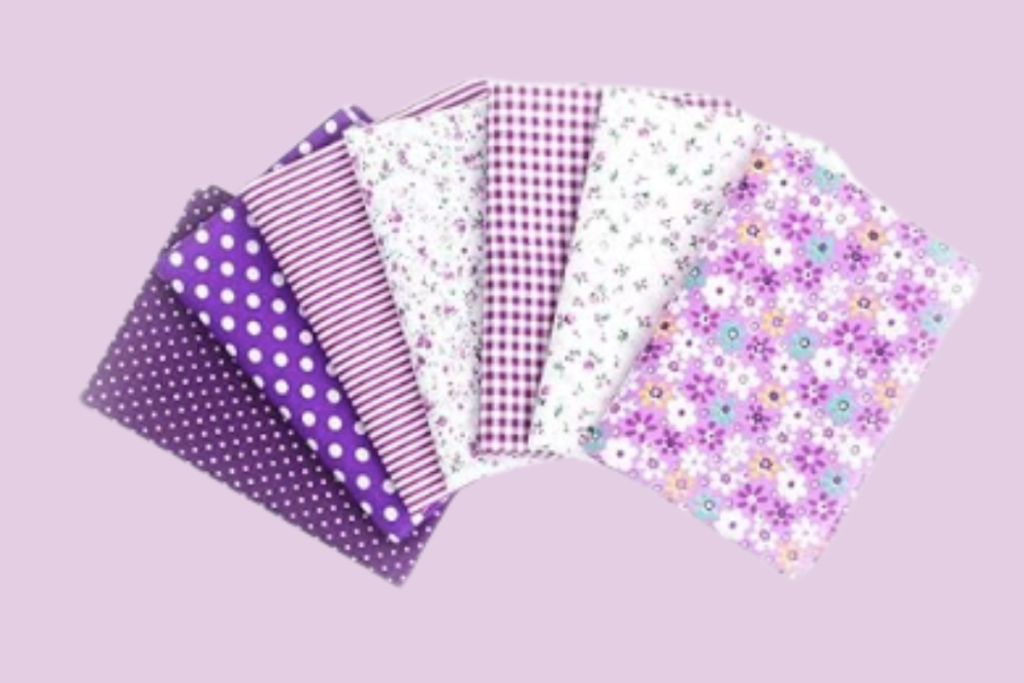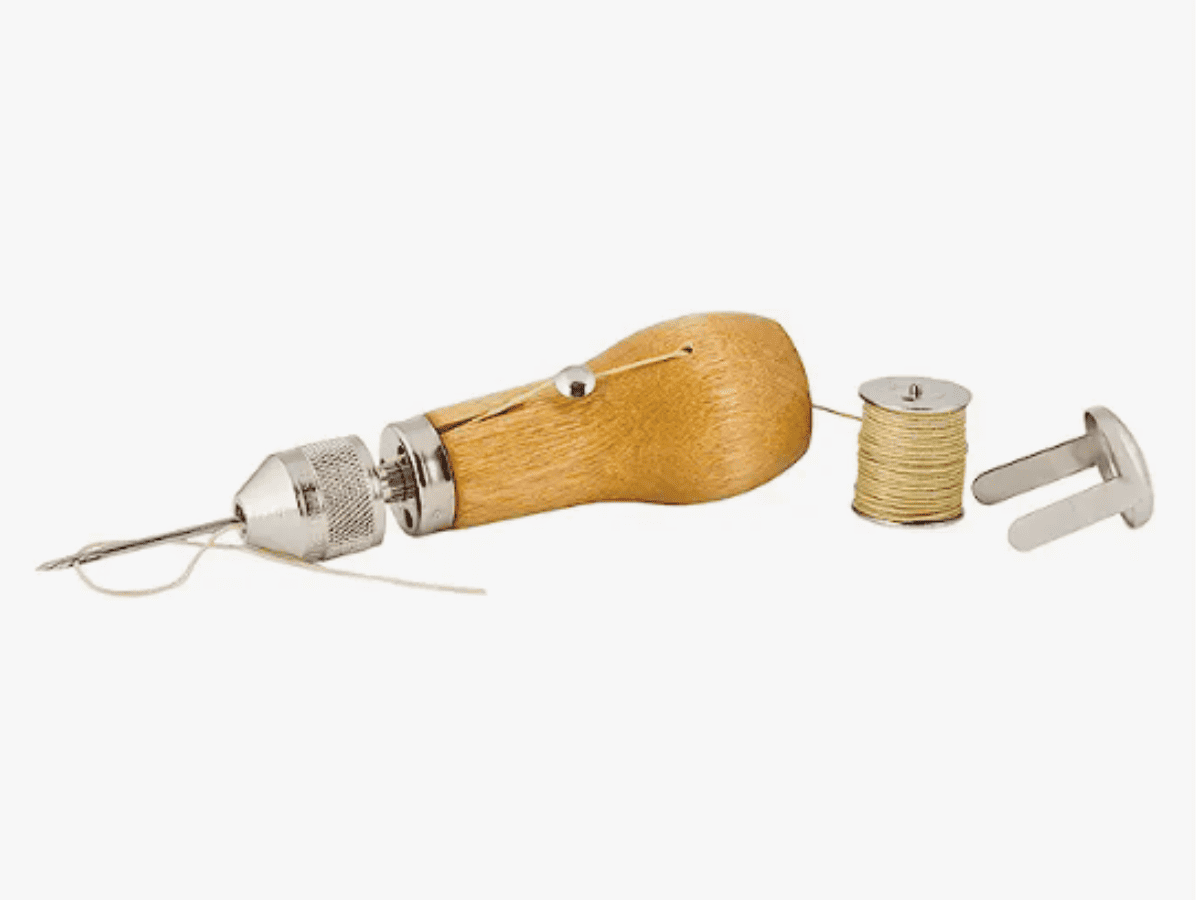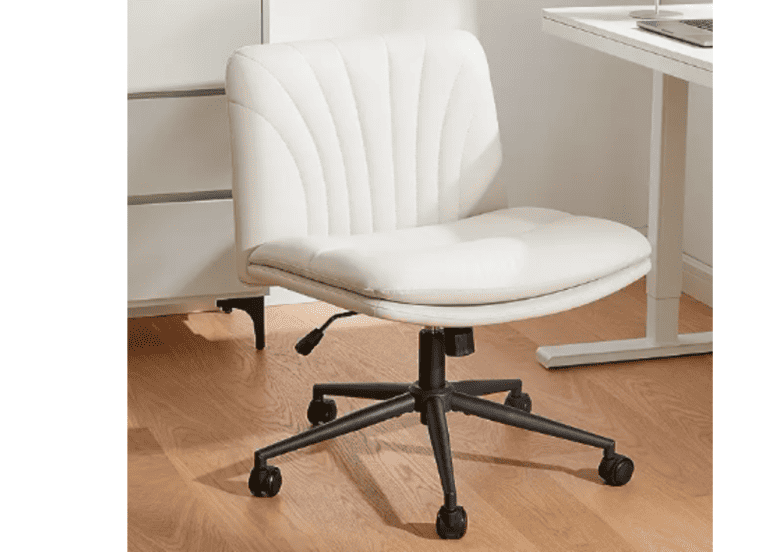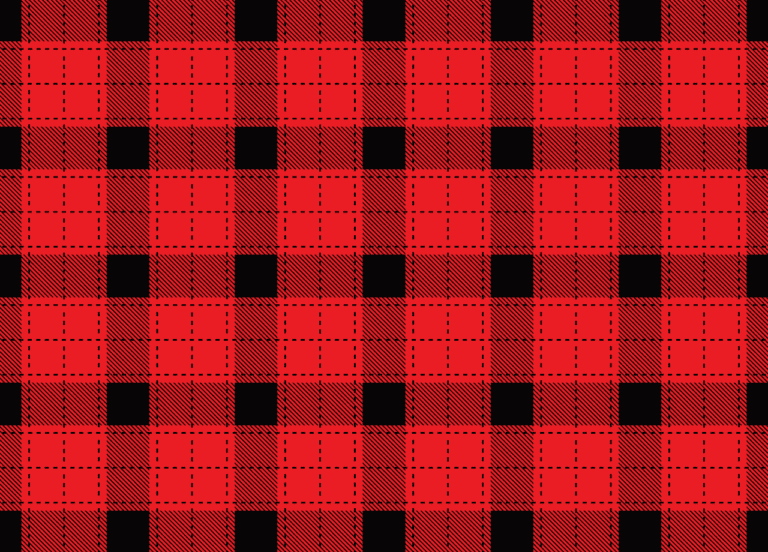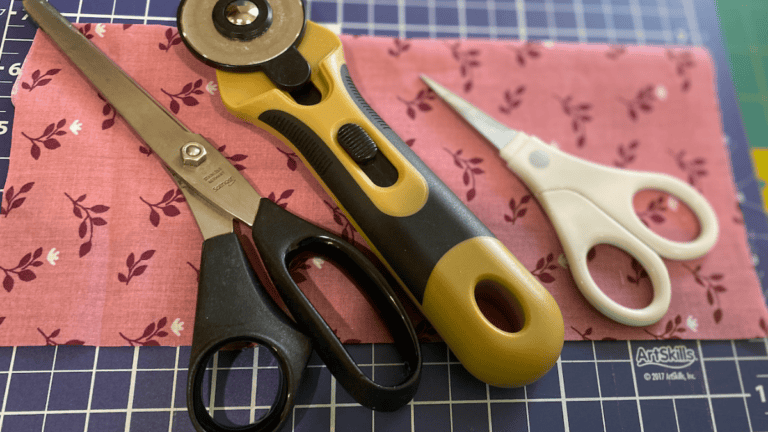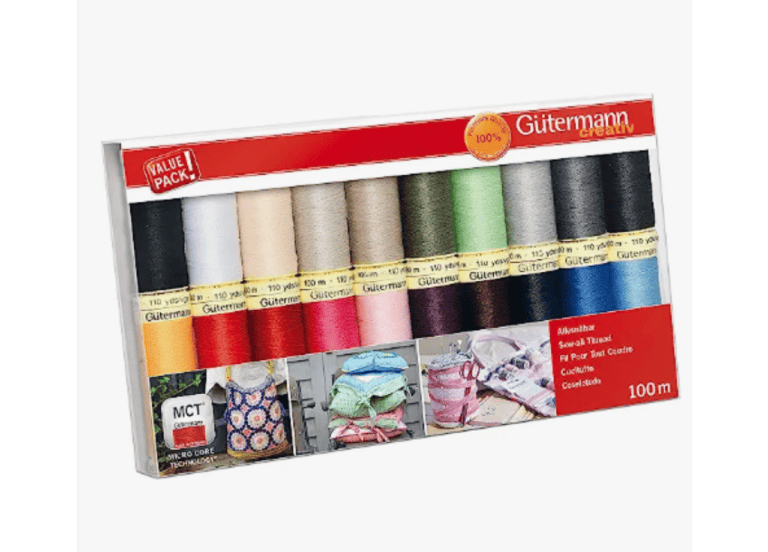Awl 101: Easy Ways to Use It
A sewing awl is a hand tool used for sewing or stitching heavy materials, such as leather, canvas, denim, and thick fabrics. It consists of a handle and a needle-like shaft that holds a sharp, pointed needle at the end. The needle is typically curved, allowing for easier penetration through heavy material.
Table of Contents
What is a Sewing Awl
Sewing awls are designed to create a perfect lock stitch, similar to the stitches produced by a sewing machine.
The process involves passing the needle through the material, creating a loop, and then pulling the thread through the loop to secure the stitch with little practice.
This technique results in strong and durable stitches that hold up well under stress.
The handle of a sewing awl is designed to provide a comfortable grip and allow for precise control during stitching.
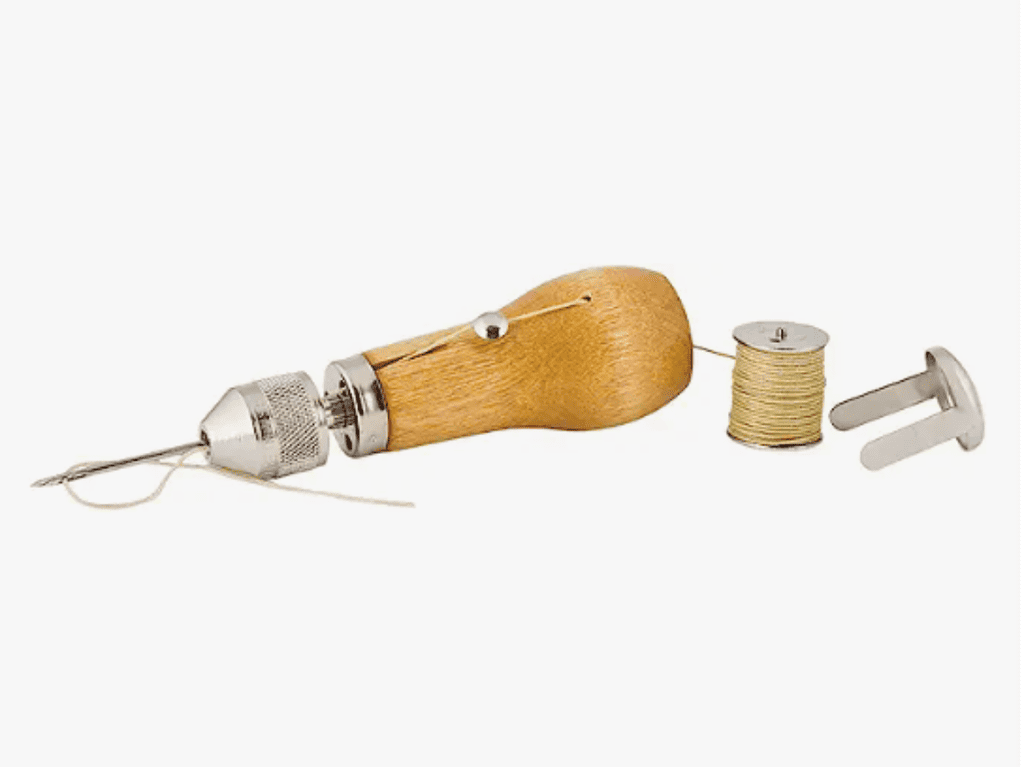
Some sewing awls feature additional features like built-in thread storage compartments or mechanisms to control the tension of the thread.
Sewing awls are commonly used in various applications, including leatherwork, shoe and boot repair, upholstery, outdoor gear repair, bookbinding, and more.
They are particularly useful in situations where a sewing machine may not be accessible or suitable, making them a versatile tool for DIY enthusiasts, professionals, and hobbyists alike.
Awl: History
The Speedy Stitcher® originated from the inventive mind of Francis Stewart of Central Massachusetts, who obtained the patent for it in 1909.
With a long history of innovation, Mr. Stewart introduced this remarkable tool to the market, where it has enjoyed unwavering popularity for over a century.
Today, Silver Creek Leather Company takes immense pride in upholding the legacy of the Speedy Stitcher® by crafting the same top-quality sewing awl at their Southern Indiana facility.
The Speedy Stitcher® Sewing Awl is not just favored by professionals but also cherished by DIY enthusiasts across various domains such as leathercrafters, sailors, boaters, equestrians, outdoor adventurers, athletes, coaches, and more.
This robust all-in-one hand tool, complete with waxed polyester thread and diamond point needles, is specifically designed to effortlessly sew a tight lock stitch, emulating the precision of a sewing machine.
It has earned a reputation worldwide as an “indispensable” companion for customers seeking reliable stitching solutions.
What is a Sewing Awl used for?
A sewing awl is a versatile tool primarily used for hand sewing and stitching heavy materials such as leather, canvas, denim, vinyl, and other thick fabrics.
It consists of a handle with a pointed straight needle attached to it. The needle is often curved and sharp, allowing it to penetrate through tough materials with relative ease.
Sewing awls are commonly used for various purposes, including:
1. Leatherwork: It is extensively employed in leathercraft to join leather pieces together, make repairs, and create intricate designs. Leather crafters use it all the time also for repair of leather goods.
2. Shoe and Boot Repair: A sewing awl is invaluable for repairing shoe soles, attaching new straps, and mending other parts of footwear.
3. Upholstery: When working on upholstery projects, such as repairing furniture, car interiors, or boat covers, a sewing awl helps create durable and neat stitches.
4. Outdoor Gear: It is commonly used by outdoor enthusiasts for sewing and repairing camping gear, backpacks, tents, and tarps. It’s also great for outdoor athletic equipment that needs repairs.
5. Sails and Canvas: Sailors and boaters utilize sewing awls to mend sails, stitch canvas tarps, and handle other tasks related to maritime equipment. It’s a handy tool for sailers to have on hand
6. Bookbinding: The precise stitching achieved with a sewing awl makes it a preferred tool for bookbinding repair and creating handmade journals.
7. Costuming and Crafts: Sewing awls find applications in costume making, creating leather accessories, and other crafting projects that involve heavy materials.
Overall, the sewing awl offers a portable and efficient solution for stitching and repairing heavy fabrics, making it a valuable tool for DIY enthusiasts, professionals, and hobbyists alike.
What size thread does a sewing awl use?
A sewing awl typically uses a strong and durable thread that can withstand the tension and stress of stitching heavy materials. The most commonly used thread for sewing awls is a waxed polyester thread. The wax coating on the thread helps lubricate it, making it easier to pass through the fabric and creating a more secure stitch.
Waxed polyester thread offers several advantages for sewing awl applications. It has excellent tensile strength, ensuring that the stitches hold up well under pressure. The wax coating helps prevent the thread from fraying or unraveling, increasing its longevity. Additionally, the waxed surface allows the thread to glide smoothly through the fabric, reducing friction and facilitating easier stitching.
When using a sewing awl, it’s important to select the appropriate thread thickness or weight based on the material you are working with. Thicker threads are suitable for heavier fabrics like leather, while finer threads work well for lighter materials.
While waxed polyester thread is the most common choice, other heavy-duty threads, such as nylon or cotton, can also be used with a sewing awl depending on the specific requirements of the project. Most people recommend high-tensile waxed thread
Most popular Sewing awl kit
We have complied a list of this helpful tool that includes free shipping. Perfect for your leather repairs. You can also check your local hardware stores if you need this handy gadget today.


Types of Awls?
There are various types of awls available, each designed for specific purposes and applications. Here are some of the common types of awls:
1. Scratch Awl: This is a basic awl with a pointed tip used for marking or scoring materials. It is commonly used in woodworking and carpentry.
2. Sewing Awl: The sewing awl, as discussed earlier, is designed for stitching heavy materials like leather, canvas, and thick fabrics. It typically has a pointed and curved needle, often with a hook or eye to hold the thread securely.
3. Brad Awl: A brad awl has a sharp, slender, and tapered point. It is primarily used for creating small holes in wood, leather, or other materials before inserting brads or small nails.
4. Bradawl Awl: Similar to a brad awl, a bradawl awl has a sharper and more pronounced point. It is commonly used in woodworking to start holes for screws or nails.
5. Gimlet Awl: A gimlet awl features a spiral or corkscrew-shaped tip, designed for drilling small holes in wood or starting holes for screws.
6. Saddler’s Awl: This awl has a diamond-shaped blade and is specifically designed for leatherwork, such as saddle-making and harness repair. It creates evenly spaced holes for stitching leather.
7. Stitching Awl: A stitching awl is a specialized awl used for making holes in leather or heavy fabrics for hand stitching. It typically has a straight or curved needle and is used in shoe and leatherwork.
8. Scratch Awl with Awl Guard: This type of awl has a protective guard or cover around the pointed tip, providing safety when not in use. It prevents accidental punctures or injuries.
These are just a few examples of the different types of awls available. The choice of awl depends on the specific task, material, and desired outcome.
Free Monthly Sewing Class
Each month, we also have an online sewing class. Every 3rd Saturday and Sunday, we have a project not found in our library or on YouTube.
Each class is unique and available for 24 hours. We send out the links via email and in our Facebook group. See the upcoming class by going here. VIPs get the PDF of instructions and lifetime access to the free tutorial.
Fabric Giveaway
Enter our monthly fabric giveaway. Simply complete the tasks daily and you will be entered into the drawing. Winner will be randomly drawn on the first day of the month and notified via email
